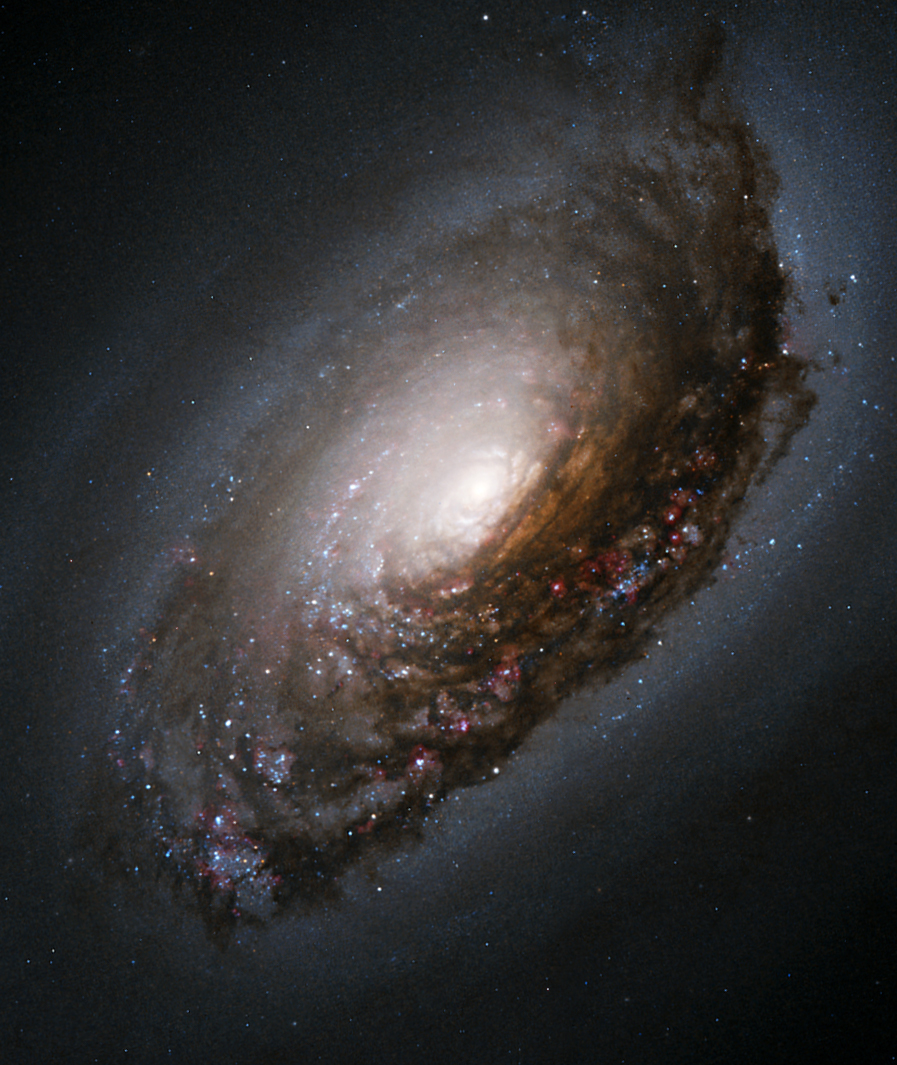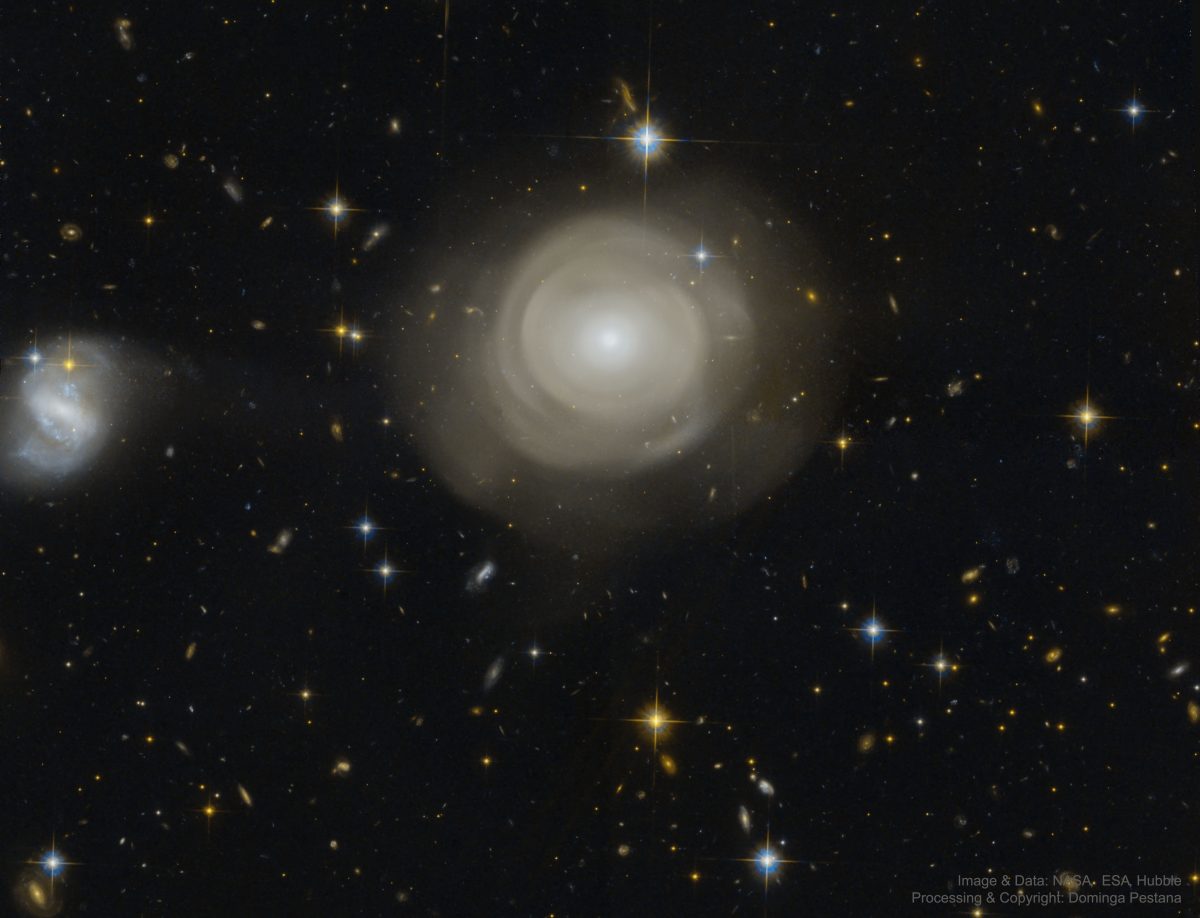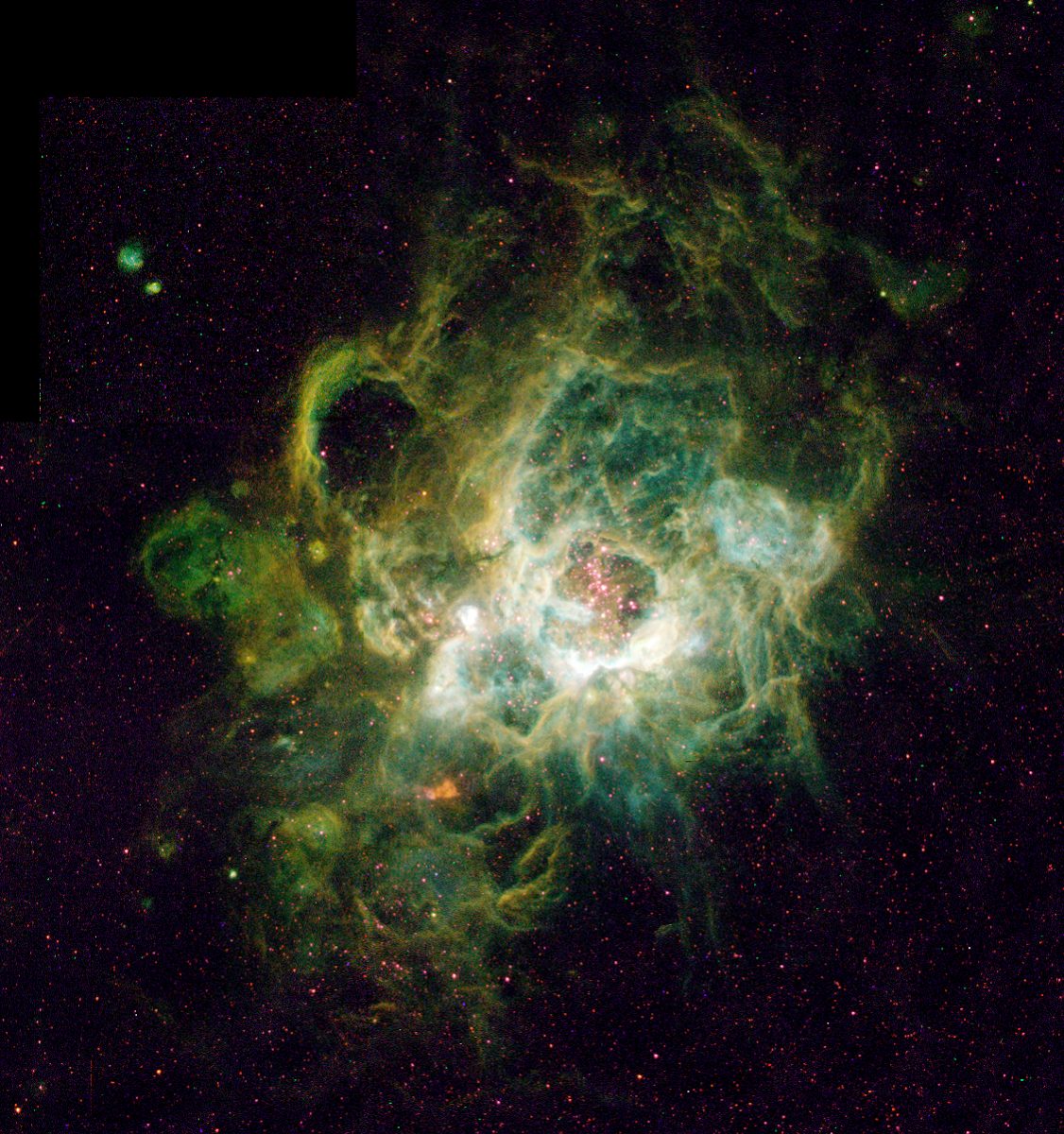Blog
Ethel Waters (October 31, 1896 – September 1, 1977) was an American singer and actress. Waters frequently performed jazz, big band, and pop music, on the Broadway stage and in concerts, but she began her career in the 1920s singing blues. Waters notable recordings include “Dinah“, “Stormy Weather“, “Taking a Chance on Love“, “Heat Wave“, “Supper Time“, “Am I Blue?“, “Cabin in the Sky“, “I’m Coming Virginia“, and her version of the spiritual “His Eye Is on the Sparrow“. Waters was the second African American, after Hattie McDaniel, to be nominated for an Academy Award. She was the first African-American to star on her own television show, in 1939, and the first African-American woman to be nominated for an Emmy Award, in 1962.
https://www.youtube.com/watch?v=FN8-Yy8Rl3s
more...https://www.youtube.com/watch?v=qkkvfXNnQIU
more...New Zealand
more...The Black Eye Galaxy (also called Evil Eye Galaxy; designated Messier 64, M64, or NGC 4826) is a galaxy which was discovered by Edward Pigottin March 1779, and independently by Johann Elert Bode in April of the same year, as well as by Charles Messier in 1780. It has a spectacular dark band of absorbing dust in front of the galaxy’s bright nucleus, giving rise to its nicknames of the “Black Eye” or “Evil Eye” galaxy. M64 is well known among amateur astronomers because of its appearance in small telescopes. It is a spiral galaxy in the Coma Berenices constellation.
The interstellar medium of Messier 64 consists of two counter-rotating disks that are approximately equal in mass. The inner disk contains the prominent dust lanes of the galaxy. The stellar population of the galaxy exhibits no measurable counter-rotation. Possible formation scenarios include a merger with a gas-rich satellite galaxy in a retrograde orbit, or the continued accretion of gas clouds from the intergalactic medium. It has a diameter of 52,962 light-years (16.238 kpc)
more...
Trilok Gurtu (Kashmiri: ترلوک گرٹو, Marathi: त्रिलोक गुर्टू) (born in Mumbai, India on 30 October 1951) is an Indian percussionist and composer, whose work has blended the music of his homeland with jazz fusion, world music and other genres.
He has released his own albums and has collaborated with many artists, including Terje Rypdal, Gary Moore, John McLaughlin, Jan Garbarek, Joe Zawinul, Bill Laswell, Maria João & Mário Laginha, and Robert Miles.
Gurtu was born to Hindu Brahmin parents in Mumbai, Kashmiri Pandit father and Marathi mother and attended Don Bosco High School (Matunga) in Mumbai. His mother, singer Shobha Gurtu, encouraged him to learn playing tabla, and he studied playing the instrument under Shah Abdul Karim.
more...
Poncho Sánchez (born October 30, 1951) is a Mexican American conguero (conga player), Latin jazz band leader, and salsa singer. In 2000, he and his ensemble won the Grammy Award for Best Latin Jazz Album for their work on the Concord Picante album Latin Soul. Sanchez has performed with artists including Cal Tjader, Mongo Santamaría, Hugh Masekela, Clare Fischer, and Tower of Power.
The youngest of eleven children, Poncho Sanchez was born in Laredo, Texas and reared in Norwalk, California. Growing up, he was exposed to and influenced by two very different styles of music: Afro-Cuban music (mambo, son, cha-cha, rumba, guaracha, and Changui) by greats such as Tito Puente, and bebop jazz, including the works of Dizzy Gillespie and Charlie Parker.
Originally a guitarist, he discovered his talent for singing during an audition for the R&B band The Halos that rehearsed across the street from his residence. Sanchez became the lead vocalist of The Halos, and would go on to teach himself the flute, the drums, and timbales before finally deciding in high school to pursue conga drumming above all.
Sanchez’s long career includes a vast musical legacy with dozens of LP and CD album releases and many thousands of public appearances. He is a favorite and often-featured artist at regional and national Latin Jazz festivals and concerts.
https://www.youtube.com/watch?v=D29wGu6xBKg
more...Clifford Benjamin Brown (October 30, 1930 – June 26, 1956) was an American jazz trumpeter. He died at the age of 25 in a car accident,leaving behind four years’ worth of recordings. He was also a composer of note: three of his compositions,”Sandu,” “Joy Spring“ and “Daahoud“,have become jazz standards.
Brown won the Down Beat critics’ poll for New Star of the Year in 1954; he was inducted into the Down Beat “Jazz Hall of Fame” in 1972 in the critics’ poll. He influenced later jazz trumpeters such as Booker Little, Freddie Hubbard, and Lee Morgan.
Brown was born into a musical family in a progressive East-Side neighborhood of Wilmington, Delaware.
more...the Hubble Space Telescope was deployed to image the unusual elliptical galaxy PGC 42871. How this galaxy came to be surrounded by numerous shells of starsmay give clues about how it evolved. Embedded in the diffuse shells are massive globular clusters of stars — stars which analyses show were born during three different epochs. This and other data indicate that PGC 42871has been in at least two galactic collisions, at least one of which might have been with a former spiral galaxy. The remaining spiral galaxy on the far left is at the same distance as PGC 42871 and may have been involved in some of the collisions. PGC 42871 spans about 20 thousand light years and lies about 270 million light years away toward the constellation of Centaurus.
more...Denny Laine (born Brian Frederick Hines, 29 October 1944) is an English musician, singer, songwriter and guitarist. He was an original member of the Moody Blues, singing the band’s first hit “Go Now” in 1964, and in 1970 played lead guitar on Ginger Baker’s debut album, and with Paul McCartney and Wings from 1971 to 1981. In 2018 as a founding member of the Moody Blues, Laine was inducted into the Rock and Roll Hall of Fame.
Laine was born in Tyseley, Birmingham, where he attended Yardley Grammar School, and took up the guitar as a boy, inspired by gypsy jazz musician Django Reinhardt. He gave his first solo performance as a musician at the age of 12 and began his career as a professional musician fronting Denny Laine & the Diplomats, which also included future Move and Electric Light Orchestra drummer Bev Bevan.
In 1964, Laine left the Diplomats, shortly afterwards, he received a call from Ray Thomas and Mike Pinder to form a new band, The M&B 5, which eventually was changed to The Moody Bluesand sang the group’s first big hit, “Go Now“; other early highlights included “I Don’t Want To Go On Without You”, another UK hit, and the two minor UK chart hits “From the Bottom of My Heart (I Love You)” and “Everyday”, both written by Laine and Pinder. He also sang on “Can’t Nobody Love You” and “Bye Bye Bird” which was a hit in France. A self-titled EP and The Magnificent MoodiesLP on Decca followed. Laine and Pinder wrote most of the Moody Blues‘ B-sides during the 1965-66 period, such as “You Don’t (All the Time)”, “And My Baby’s Gone” and “This Is My House”. However, Laine’s tenure with the band was relatively short-lived and, after a number of comparative chart failures.
more...Willem Bernard “Pim” Jacobs (29 October 1934 – 3 July 1996) was a Dutch jazz pianist and television presenter. Born in Hilversum, he worked with Louis van Dijk and Rogier van Otterloo, as well as Wes Montgomery. He married jazz singer Rita Reys in 1960.
Jacobs became known for his eponymous trio, which included guitarist Wim Overgaauw, his brother, bassist/drummer Ruud Jacobs, and (later) drummer Peter Ypma. He played for charity with van Dijk and Pieter van Vollenhoven. For television, he hosted the music shows Music-All-In and Music Hall, and the game show Babbelonië.
Pim Jacobs died of cancer, in Tienhoven (Maarssen).
https://www.youtube.com/watch?v=yDDMvic1Q-Y
more...John Haley “Zoot” Sims (October 29, 1925 – March 23, 1985) was an American jazz saxophonist, playing mainly tenor but also alto (and, later, soprano) saxophone. He first gained attention in the “Four Brothers” sax section of Woody Herman‘s big band, afterward enjoying a long solo career, often in partnership with fellow saxmen Gerry Mulligan and Al Cohn, and the trombonist Bob Brookmeyer.
Sims was born in 1925 in Inglewood, California to vaudeville performers Kate Haley and John Sims. His father was a vaudeville hoofer, and Sims prided himself on remembering many of the steps his father taught him. Growing up in a performing family, he learned to play drums and clarinet at an early age. His brother was the trombonist Ray Sims.
Following in the footsteps of Lester Young, Sims developed into an innovative tenor saxophonist. Throughout his career, he played with big bands, starting with those of Kenny Baker and Bobby Sherwood after dropping out of high school after one year. He played with Benny Goodman‘s band in 1943 and replaced his idol Ben Webster in Sid Catlett‘s Quartet in 1944.
more...This is a Hubble Space Telescope image (right) of a vast nebula called NGC 604, which lies in the neighboring spiral galaxy M33, located 2.7 million light-years away in the constellation Triangulum. This is a site where new stars are being born in a spiral arm of the galaxy. Though such nebulae are common in galaxies, this one is particularly large, nearly 1,500 light-years across. The nebula is so vast it is easily seen in ground-based telescopic images (left). At the heart of NGC 604 are over 200 hot stars, much more massive than our Sun (15 to 60 solar masses). They heat the gaseous walls of the nebula making the gas fluoresce. Their light also highlights the nebula’s three-dimensional shape, like a lantern in a cavern. By studying the physical structure of a giant nebula, astronomers may determine how clusters of massive stars affect the evolution of the interstellar medium of the galaxy. The nebula also yields clues to its star formation history and will improve understanding of the starburst process when a galaxy undergoes a “firestorm” of star formation. The image was taken on January 17, 1995 with Hubble’s Wide Field and Planetary Camera 2. Separate exposures were taken in different colors of light to study the physical properties of the hot gas (17,000 degrees Fahrenheit, 10,000 degrees Kelvin.
more...Benjamin Chase Harper (born October 28, 1969) is an American singer-songwriter and multi-instrumentalist. Harper plays an eclectic mix of blues, folk, soul, reggae and rock music and is known for his guitar-playing skills, vocals, live performances, and activism. He has released twelve regular studio albums, mostly through Virgin Records and has toured internationally.
Harper is a three-time Grammy Award winner, with awards for Best Pop Instrumental Performance and Best Traditional Soul Gospel Album in 2005 and Best Blues Album in 2014.
Harper was born in Pomona, California. His late father, Leonard, was of African-American and Cherokee ancestry, and his mother, Ellen Chase-Verdries, is Jewish. His maternal great-grandmother was a Russian–Lithuanian Jew. His parents divorced when he was five years old, and he grew up with his mother’s family. Harper has two brothers, Joel and Peter.
Harper began playing guitar as a child. His maternal grandparents’ music store The Folk Music Center and Museum laid a foundation of folk and blues for the artist, complemented by regular patrons Leonard Cohen, Taj Mahal, John Darnielle, and David Lindley and quotes of William Shakespeare and Robert Frost made often by his grandfather.
more...Richard Bona (born 28 October 1967 in Minta, Cameroon) is an Cameroonian Grammy Award-winning jazz bassist.
Bona Pinder Yayumayalolo was born in Minta, Cameroon, into a family of musicians, which enabled him to start learning music from a young age. His grandfather was a griot – a West African singer of praise and storyteller – and percussionist, and his mother was a singer. When he was four years old, Bona started to play the balafon. At the age of five, he began performing at his village church. Not being wealthy, Bona made many of his own instruments: including flutes and guitars (with cords strung over an old motorcycle tank).
His talent was quickly noticed, and he was often invited to perform at festivals and ceremonies. Bona began learning to play the guitar at the age of 11, and in 1980, aged just 13, he assembled his first ensemble for a French jazz club in Douala. The owner befriended him and helped him discover jazz music, in particular that of Jaco Pastorius, which inspired Bona to switch his focus to the electric bass.
more...Glen Moore (born October 28, 1941 in Portland, Oregon) is a jazz bassist who occasionally performs on piano, flute and violin.
His performing career began at age 14 with the Young Oregonians in Portland, Oregon where he met and played with Native American saxophonist, Jim Pepper. He graduated with a degree in History and Literature from the University of Oregon. His formal bass instruction started after college with Jerome Magil in Portland, James Harnett in Seattle, Gary Karr in New York, Plough Christenson in Copenhagen, Ludwig Streicher in Vienna and Francois Rabbath in Hawaii. For the past 30 years, Glen has played a Klotz bass fiddle crafted in Tyrol circa 1715 on which he has made extensive use of a unique tuning with both a low and high C string.
Moore is a founding member of Oregon, but worked also regularly with Rabih Abou-Khalil, Vasant Rai, Nancy King and Larry Karush.
more...New Zealand Native
more...More Posts
- Earl Lindo
- Chano Pozo
- Henry Red Allen
- World Music Roehind
- Daily Roots Lee Scratch Perry
- Epiphany Day 2024
- Cosmos NGC 2014/2020
- Sandy Denny
- Ebo Taylor
- Earl Scruggs
- World Music Lenhart Tapes
- Daily Roots Smith & The Prophets
- Temple Israel Erev Shabbat Service 1-5-24
- Cosmos Trapezium
- Paul Wertico
- Johnny Adams
- Alvin Ailey
- Elizabeth Cotten
- Flamenco Fridays Camarón y Tomatito
- Daily Roots Culture


